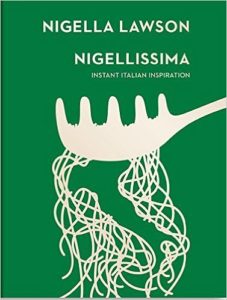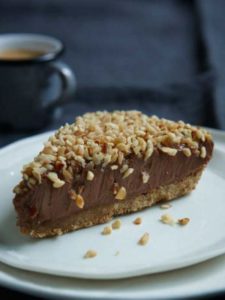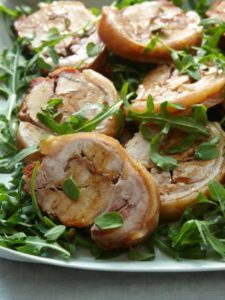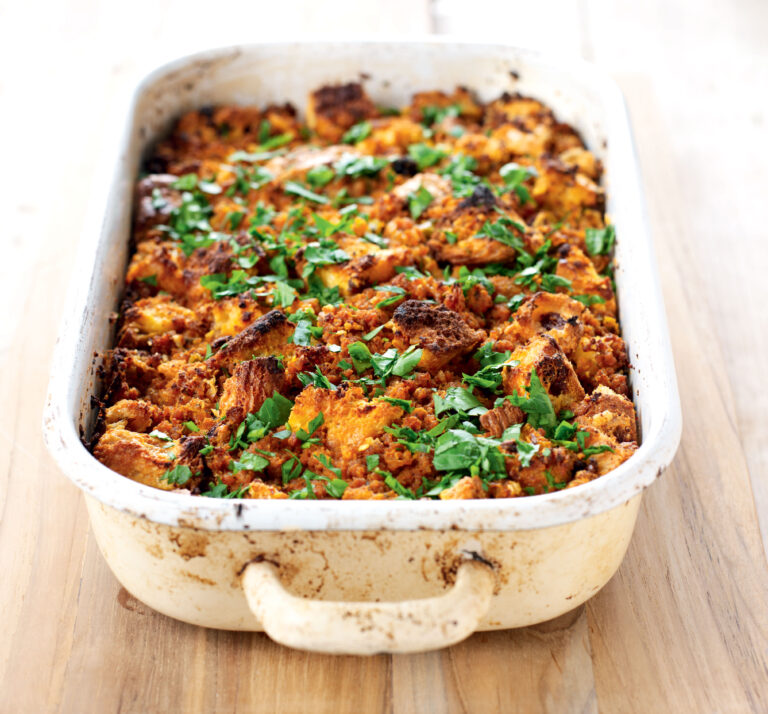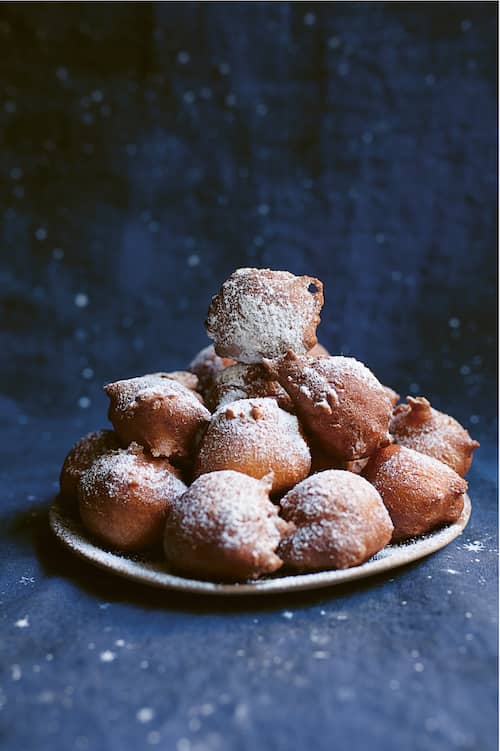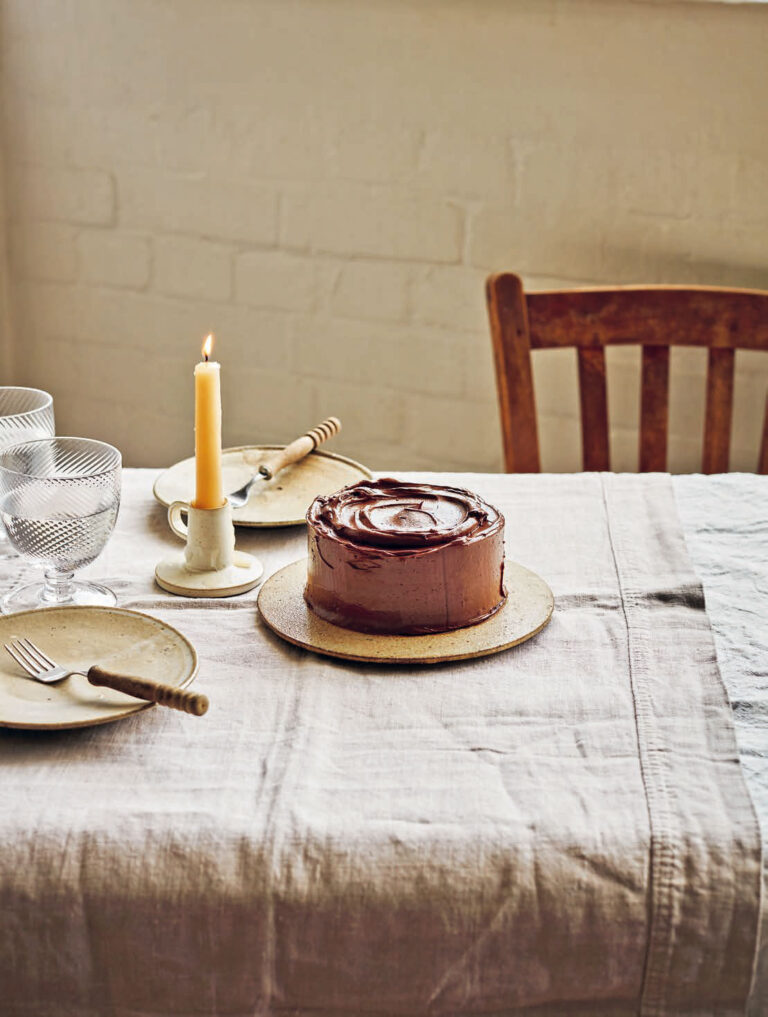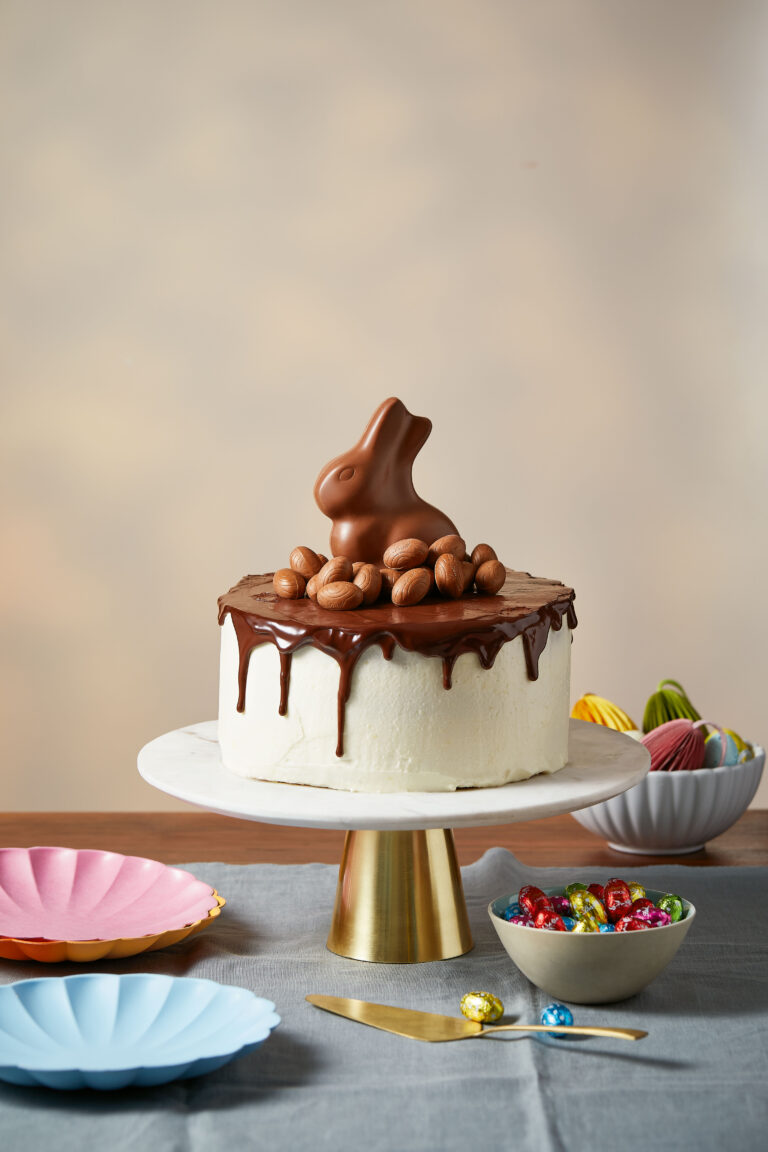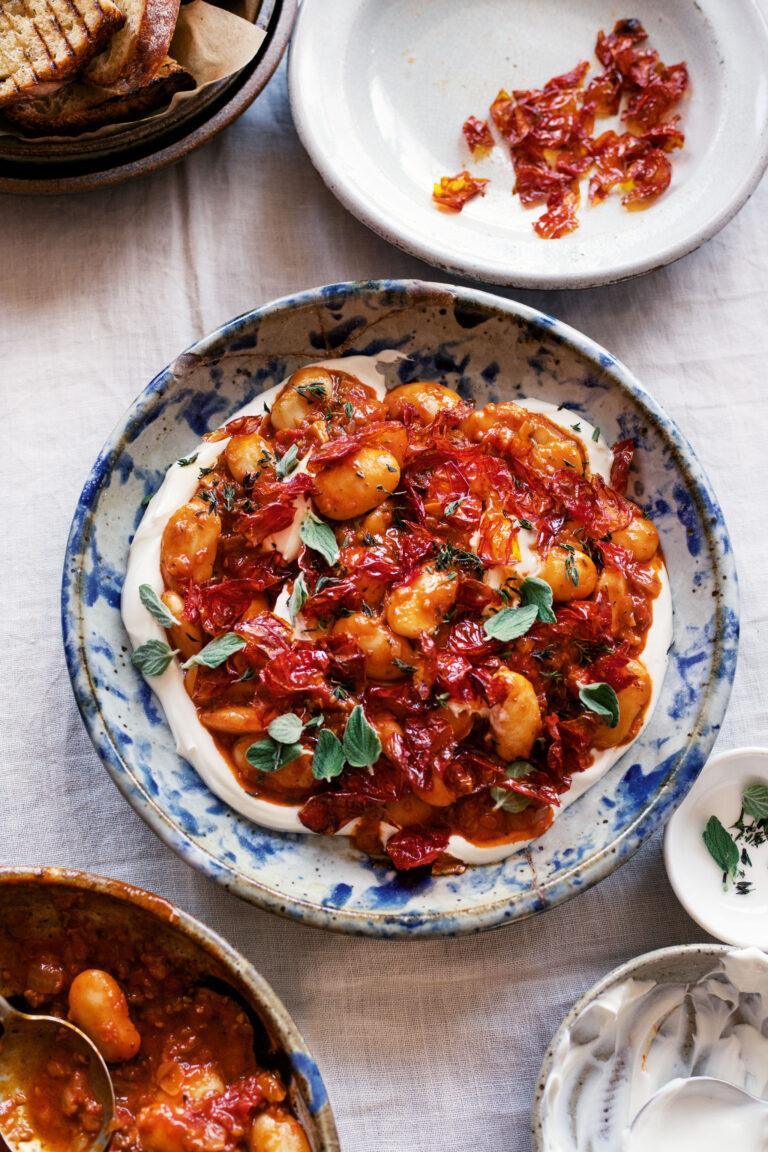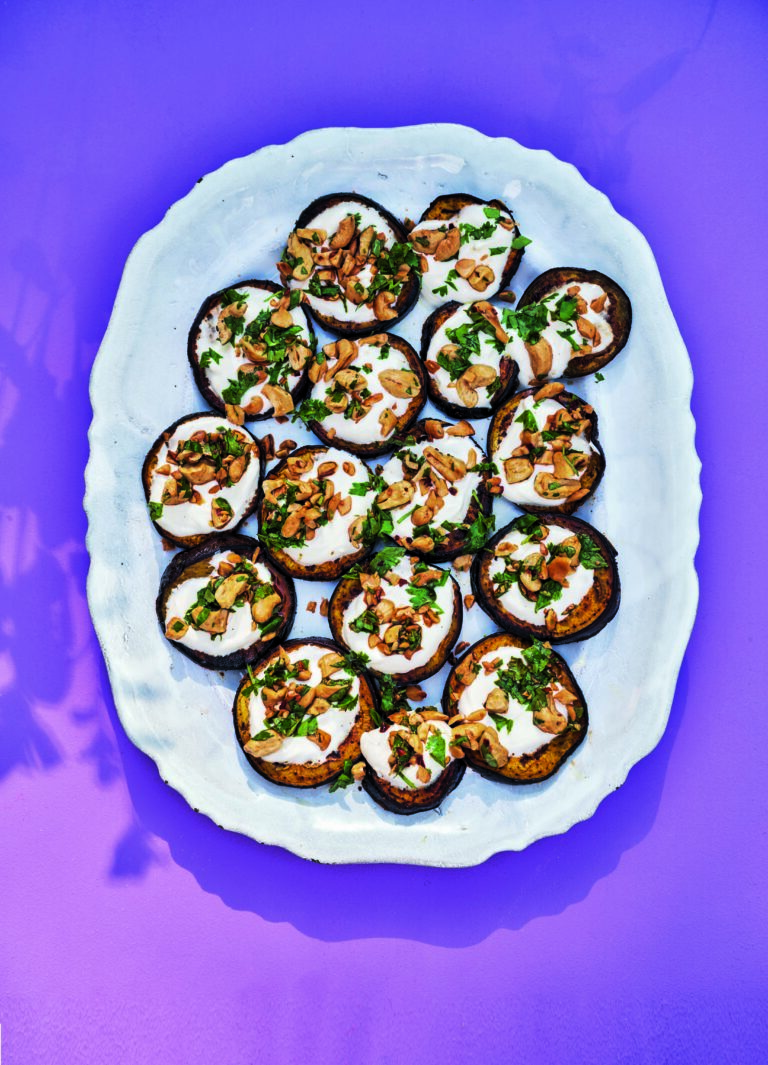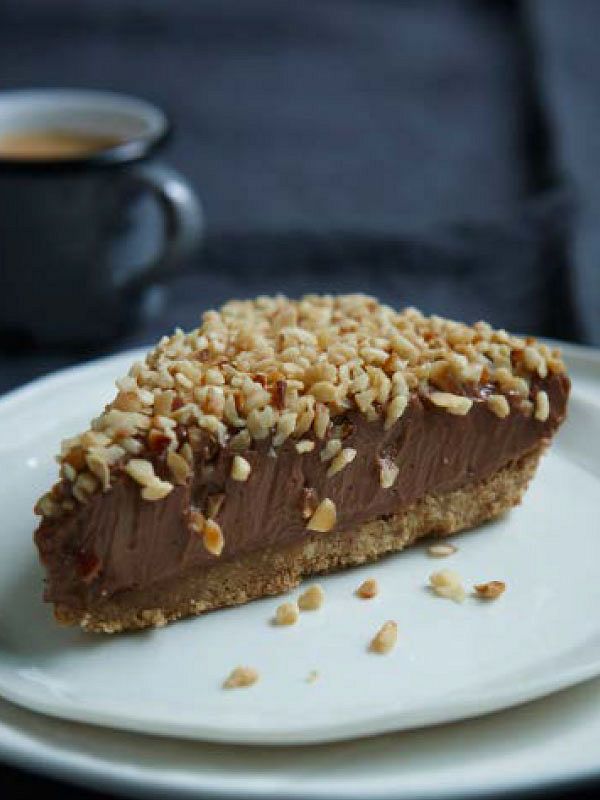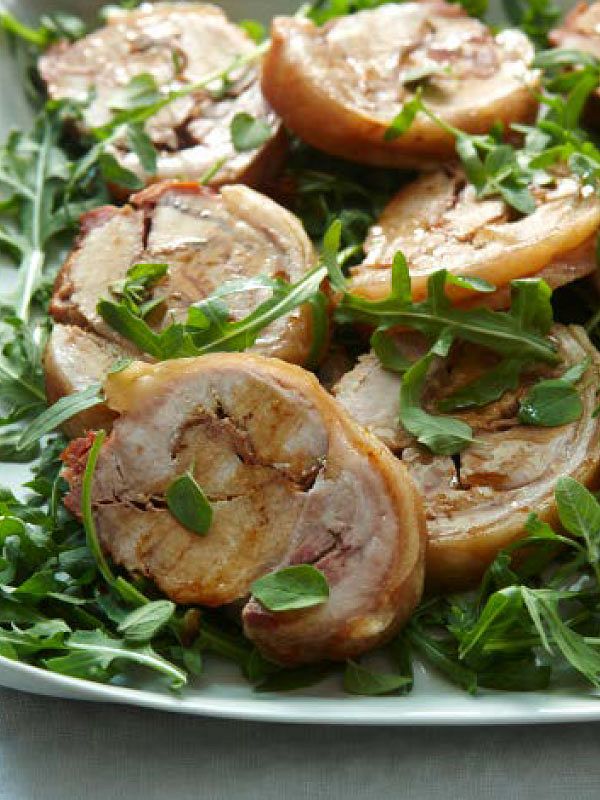Yoghurt Pot Cake
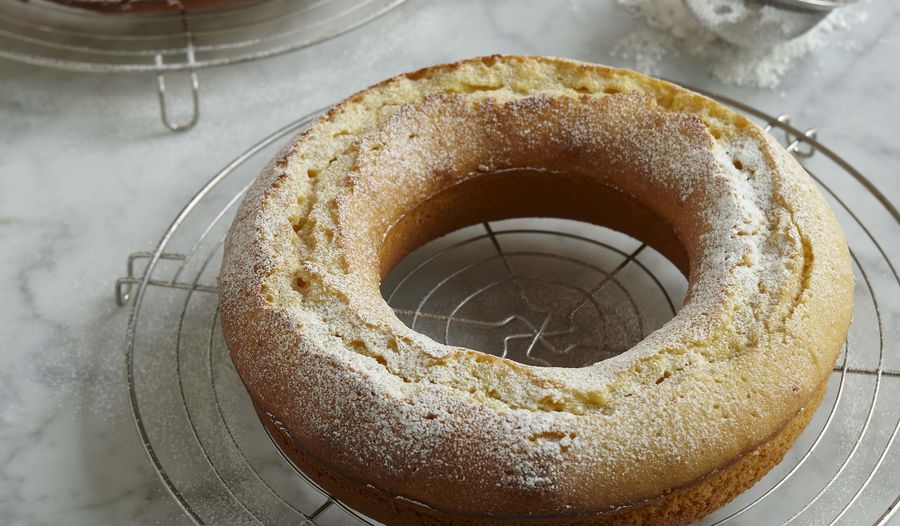
A simple but beautiful cake recipe created by Nigella Lawson. This yoghurt cake blends together plain yoghurt, sugar and flour with a hint of sharp lemon.
From the book
Buy From
Introduction
If there’s a family in Italy that doesn’t have a recipe for yoghurt pot cake, then I’ve yet to meet them. And I love this plain cake with perhaps disproportionate intensity. There is something so quintessentially Italian about its scent – as it bakes, I think I’m in a kitchen in Italy – and its taste – that combination of lemon and vanilla – and even the old-fashioned charm of its method. This is it: your yoghurt pot is your unit of measurement. And even though I saw from the original recipe that I copied down (from some scrawled piece of paper in the kitchen of a house I’d rented one summer), that the specified yoghurt pot had a 125ml capacity, I have kept the same number of eggs for my 150ml yoghurt pot. I work on the principle that eggs these days are larger than when the cake first came into being. Anyway, it works, and that’s the main thing. And this is the way it works: for 1 cake, you need 1 pot of yoghurt, 2 pots of sugar, 1 pot of oil, 1 pot of potato starch or cornflour and 2 pots of flour.
In keeping with this style of measuring, you will see that I have even stipulated 2 capfuls of vanilla extract. Although potato starch is the norm in Italy, it isn’t easily available in Britain, which is why I have substituted cornflour. Bear in mind that potato starch is denser, or rather weighs more per pot than cornflour does. Which is to say, if you’re using potato starch, it will weigh in as 100g, whereas the same volume of cornflour is 75g. I’ve specified actual weights in the ingredients list, not only so that you can make this even if you’re working from a jumbo carton of yoghurt, but also because I feel the ingredients list should double as a shopping list, too.
I know this cake best in a ring shape, ciambella (pronounced “chambella”) as it’s known in Italy, and a 22cm savarin or ring mould is a fairly standard baking tin here in the UK, too, but do use a 22 or 23cm springform tin if that’s easier for you: the cake won’t be as high, but don’t use a smaller diameter because, without the hole in the middle, the cake wouldn’t cook properly in the centre if the tin were any deeper.
Finally, I’m aware it may sound a bit of a bore having to whisk the egg whites, but it only sounds it; in the days of electric whisks, it really isn’t any trouble. This is my favourite weekend breakfast, or – indeed – anytime treat.
Ingredients
| 150 g | plain yoghurt |
| 150 ml | flavourless vegetable oil, plus some for greasing |
| 3 | eggs |
| 250 g | caster sugar |
| 2 | capfuls (1 ½ teaspoons) vanilla extract |
| Zest ½ unwaxed lemon | |
| 175 g | plain flour |
| 75 g | cornflour |
| 1 tsp | icing sugar, to serve |
Essential kit
You will need: a 22cm savarin or ring mould (or 22 or 23cm springform cake tin).
Method
Preheat the oven to 180° C/ gas mark 4, and grease your ring mould (or springform tin); you can use vegetable oil for this or a special baking spray.
Separate the eggs and put the whites in one bowl and the yolks in another. Whisk the whites until you have firm peaks, then set aside while you get on with the rest of the cake.
Scrape the yoghurt out of its pot and on to the egg yolks, then use the emptied yoghurt pot to measure out your other ingredients – so, next, add 2 pots (just) of sugar and whisk with the egg yolks and yoghurt until airy and light.
Now fill your yoghurt pot up with vegetable oil and, beating all the while, slowly add this to the egg yolk mixture. Then beat in 2 capfuls of vanilla extract and zest of half a lemon.
Still beating, add 2 yoghurt potfuls of flour followed by 1 yoghurt potful of cornflour or potato starch, then scrape down and fold in with a rubber or silicone spatula. Now, with a large metal spoon, dollop in the whisked egg whites, and fold them in with the spatula.
Fill the prepared ring mould with the smooth, soft batter – it will come right to the top – and bake in the oven for 30-35 minutes; when cooked, the sides will be coming away at the edges and a cake tester will come out clean.
Remove it from the oven to a wire rack, letting the cake sit in the tin for 10 minutes before turning it out.
Once cooled (although I love this still slightly warm), transfer it to a serving plate or stand and dust with icing sugar. Traditionally, this cake would be placed on the plate with the smooth side uppermost, but I rather like it turned back up the way it was baked, with its rustic cracks and uneven surface visible.
Reviews
Have you tried this recipe? Let us know how it went by leaving a comment below.
Thank you for your rating. Our team will get back to any queries as soon as possible.
Please note: Moderation is enabled and may delay your comment being posted. There is no need to resubmit your comment. By posting a comment you are agreeing to the website Terms of Use.

